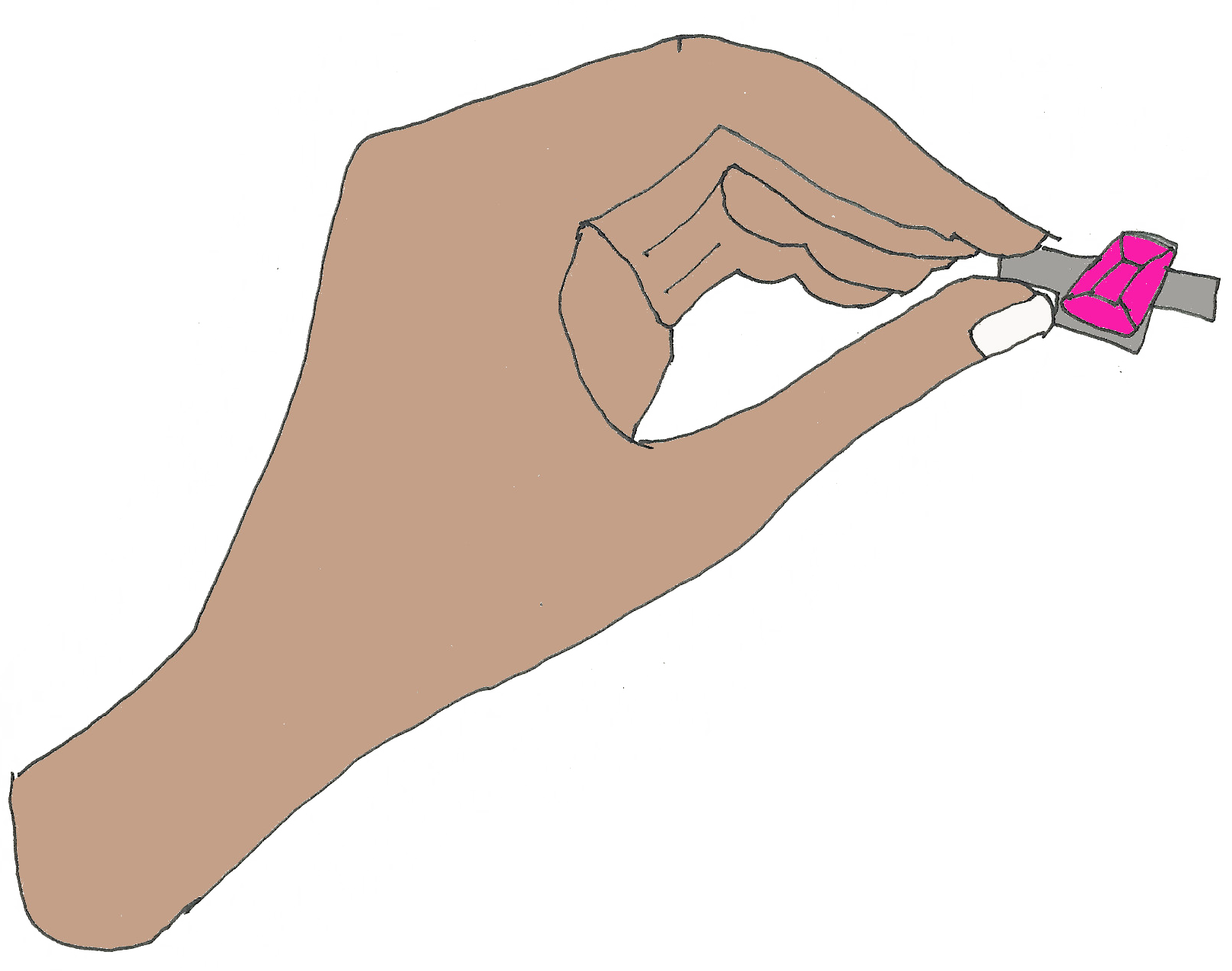Do you know where the largest feminist movement of the 1960s was originally based? Indonesia! Many European and Northern American feminists believe that their interpretation of liberty and equality was exported to the so-called Global South. The women’s* movement in Indonesia in fact had experienced its widest expansion between the 1920s and the early 1960s. With three million members Gerwani was the strongest organisation of this movement. It presented the largest and most progressive feminist movement in the world of that time. After acoup d’Etat that was supported by Western countries this feminist movement and all other critical or leftist networks were silenced. Critical ideas could only get communicated in hidden, translated and coded form. The following 30 years of oppression and propaganda left behind scars and stigmata that affect the public memory of the women’s movement up until today. Still trauma cannot heal, because memories are handled as family secrets. In this context art is a valued platform for voicing critique, initiating transformation and healing from trauma.
RUMAH HACKER
RUMAH
HACKER
The video compares the traditional women-centered tribe house of the Minang Kabau (West Sumatra) with the traditional men-centered Hackerspace of the hacker culture. Both foster sharing practices and access to tools of production, shared authorship/parenthood, commoning and inviting in new practices. Both celebrate self-governance and resilience, generate new approaches, yet both are based on a gender regime. The Rumah Hacker, as a third format, embraces both spaces to generate an inclusive third form of space. Video duration: 9min
Rumah Hacker ︎︎︎
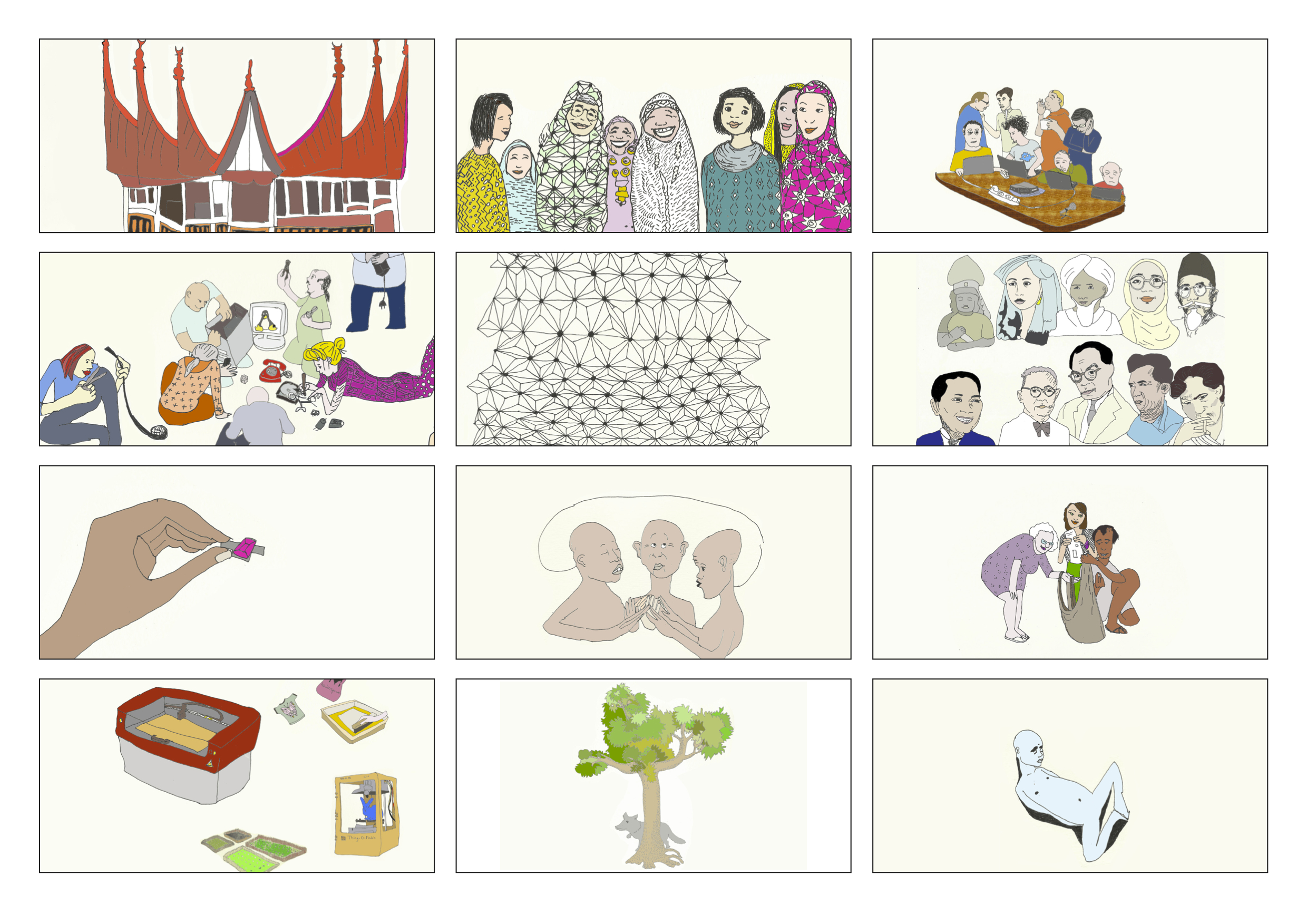
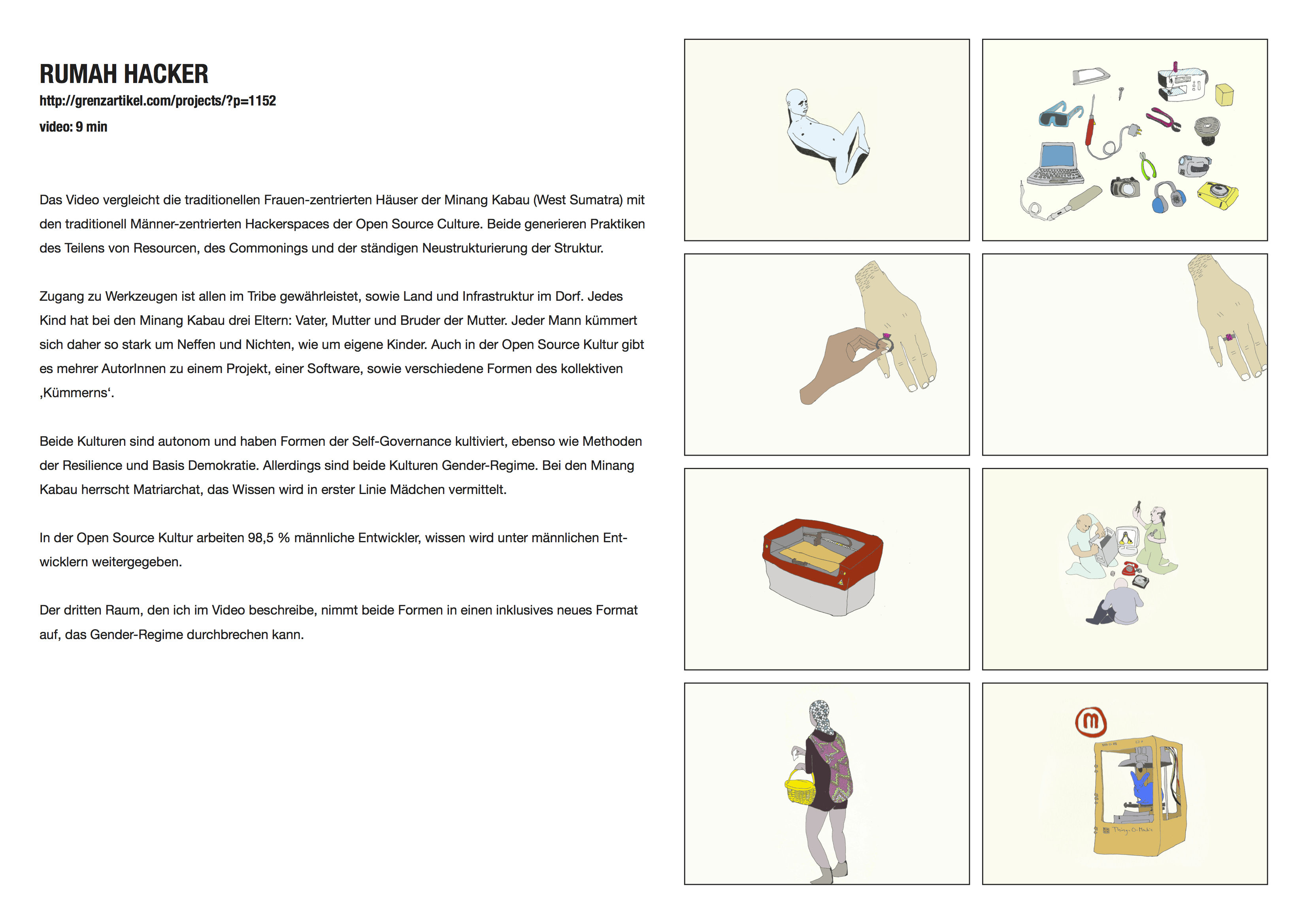
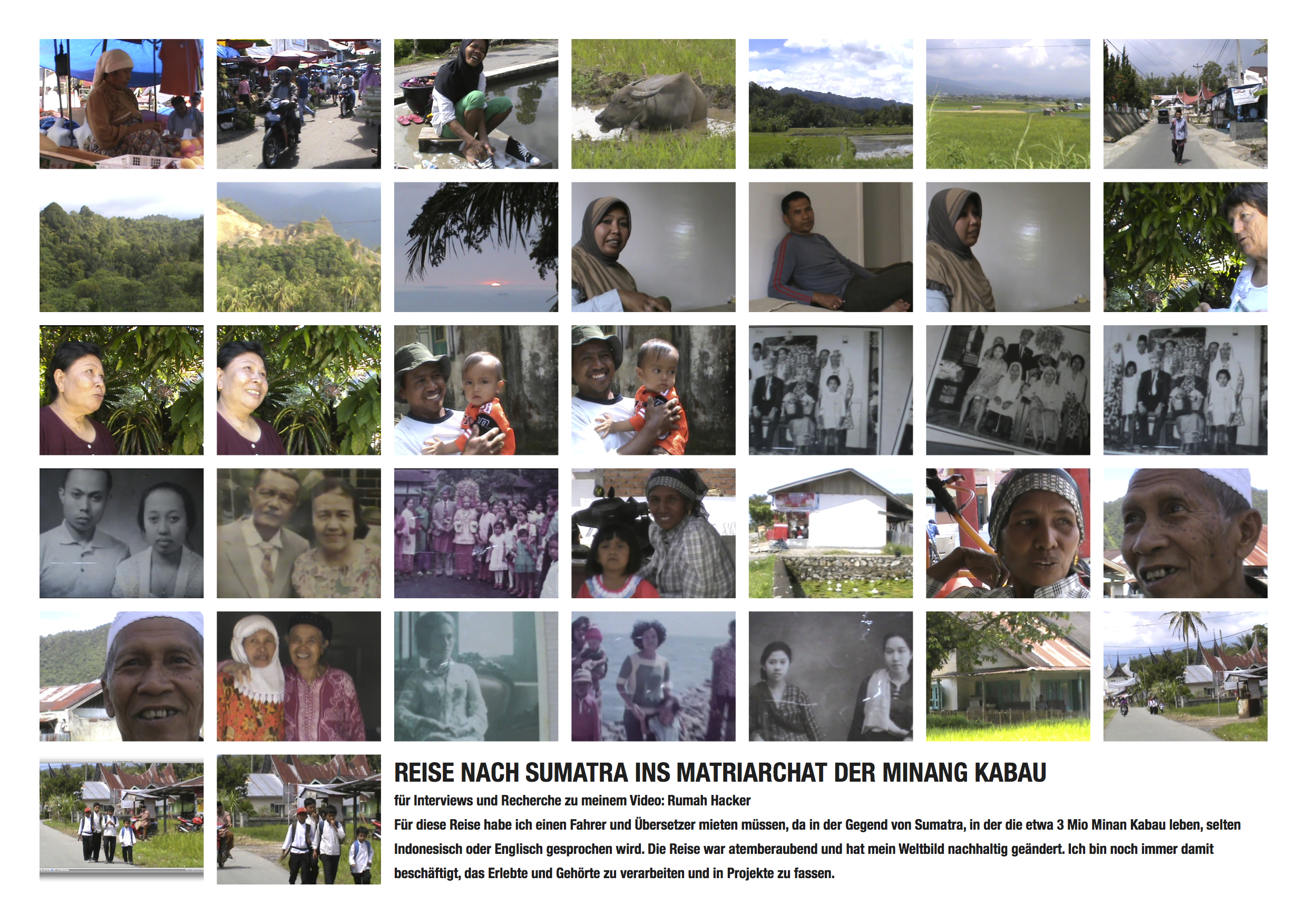

Nov 12, 2013

Reactive Courage, animation, 6 mins.

2024 Ebru Timtik Award Artwork by Stefanie Wuschitz:
Reactive Courage
Stefanie Wuschitz’s words on Reactive Courage: “There are numbers, there is quantitative research, there is evidence that makes us speak up with more confidence. But to deal with emerging feelings of despair and unsettling questions that shake up core values I sometimes need more than that. Art can be a way of processing complex, dark, traumatic, content that is hard to unpack. Having lived in South East Asia as an arts-based researcher for six months now, I have gone through different stages of grief. And I still digest all the things I heard in interviews and conversations. Some of them pop up in this animation. After countless dark, vibrant and sleepless nights what gave me new courage was looking at street art in the morning. "Only the dead know the end of the war" is one of these sentences I discovered on a street wall, written in a different language. The two creatures in the last scene of my animation, with one eye each merging into a single face, are also inspired by a simple drawing someone painted on a street wall. Like street artists, it helps me a lot to express myself, because this way the restlessness decreases. I feel more safe again and have an easier time finding important allies who validate and enable each other's struggle. This way I also found the people who helped me to make this animation: Asara Panyalai, Wahyudi Tanjung Raupp, A. Semali and Surya Widodo. Thank you so much for having me create this year's Ebru Timik Award artwork.”


TETESCHA US. she transcends borders
TETESCHA US.
she transcends borders
vimeo.com/1290267
sixpackfilm.com/en/1517/

Der Trickfilm “Tetescha us – She is crossing borders” geht von einer zweifachen Aporie aus: von der Uneinlösbarkeit neutraler Bilder des Nahostkonflikts und der Unmöglichkeit, diesen als intakte inhaltliche Erzählung zu repräsentieren. Ausgangspunkt ist ein Comic-Workshop, den Filmemacherin Stefanie Wuschitz im palästinensischen Flüchtlingslager Beddawi im Nordlibanon organisiert. 11- bis 13jährige palästinensische Mädchen zeichnen hier Wunschbilder einer anderen Realität. Lassen Fisch und Schmetterling, Meermann und Meerfrau heiraten. Die Zeichnungen zeugen von Erfahrungen gesellschaftlicher Ausschlüsse durch die strikte ethnische und konfessionelle Fragmentierung des Libanon. Stereotype Darstellungen von Flüchtlingen und Camps vermeidet Wuschitz, indem sie Protagonisten und Settings ihrer Videoaufnahmen mit wenigen Strichen vor weißem Hintergrund nachzeichnet und anschließend mit Tonaufnahmen und Text-Inserts unterlegt. Der so erreichte Grad an Abstraktion hebelt Rezeptionsmuster aus und etabliert spielerisch neue symbolische Bedeutungsgeflechte. Aus feinen schwarzen Linien boomen sekundenweise Hochhäuser des Nachkriegs-Beirut, um sich kurz darauf zu Partyszenen zu formen. Politische Kontrahenten tragen ihre Gefechte nunmehr über Fernsehschirme aus. Flüchtige Tableaus, Töne und losgelöste Statements schwellen an, überlagern sich. Die Stimmen der Flüchtlinge aus Beddawi verklingen in diesem neuen Libanon an einer unsichtbaren Schallgrenze. 400.000 warten seit der Staatsgründung Israels 1948 auf eine Rückkehr. Eine NGO-Mitarbeiterin sagt, Mädchen werden nun wieder ganz jung verheiratet. Neo-patriarchale Ordnungen als Zeichen schwindender Hoffnung?
Am Ende lässt Wuschitz die Bilder nicht bröckeln, stattdessen wachsen Menschen über sich hinaus. Sie besteigen Häuser wie Felsen und haben sich analog zur Textzeile – „Marry or jump?” – bereits entschieden.
(Gunnar Landsgesell)
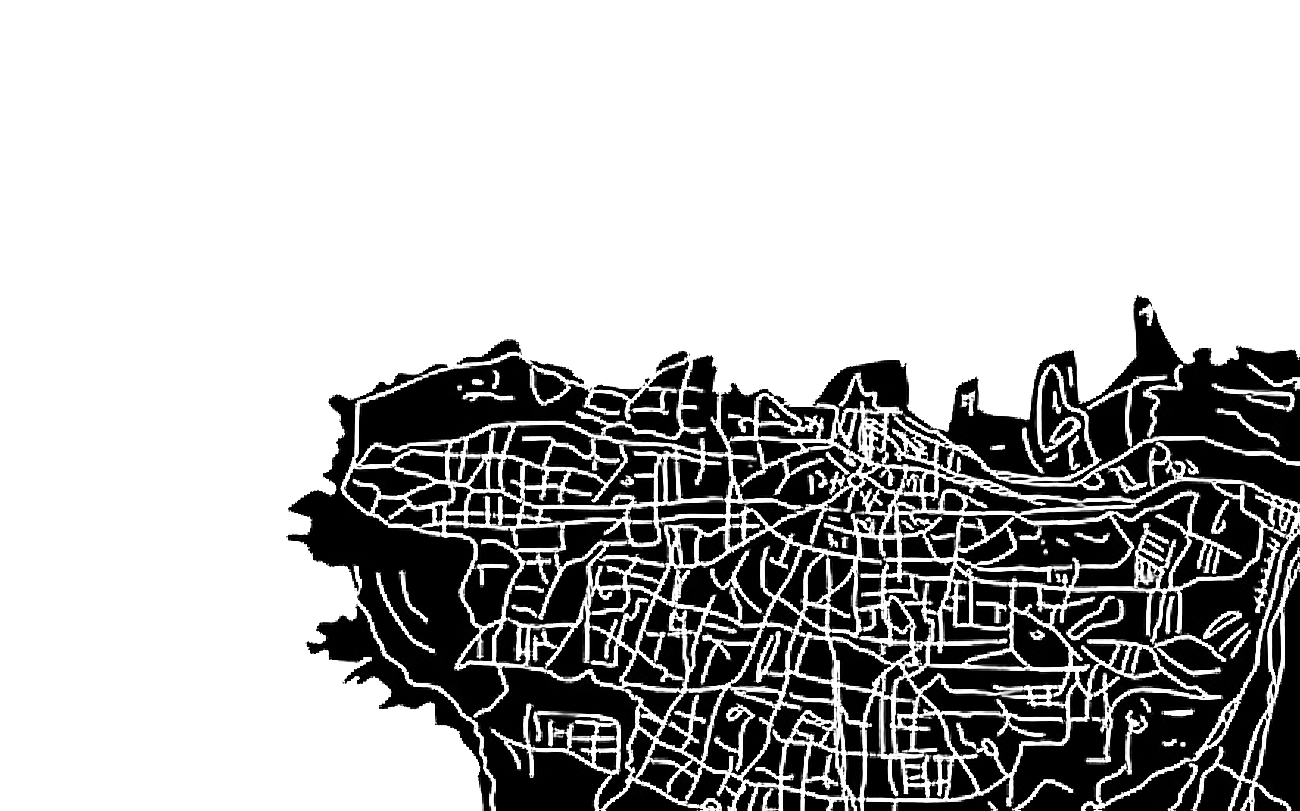
Jun 28, 2010
Looped Scroll
LOOPED SCROLL
CLICK HERE FOR VIDEO DOCUMENTATION ︎︎︎









Video von Faksimile, Kainz
SCHAURAUM Angewandte
Kategorie: Zoetrope
Material: 3 Scheibenwischer-Motoren, 3 Licht Sensoren, 54 mit 3D Printer ausgedruckte Figuren mitPlaast Granulat nachbearbeitet, 3 Stroboskope
Enstehungsjahr: 2012
Ausstellung von Stefanie Wuschitz
(Technische Unterstützung: Christoph Freidhöfer)
Die Installation Looped Scroll bezieht sich auf die 1975 von Carolee Schneemann vorgenommene Performance Interior Scroll. Das Zoetrop (Wundertrommel) zeigt einen Ausschnitt daraus. Das in der Installation hörbare Gespräch mit Carolee Schneemann hat Stefanie Wuschitz im September 2010 geführt. Junge österreichische Medienkünstlerinnen scheinen heute mit ähnlichen Konditionen konfrontiert zu sein, wie die 1939 in Pennsylvania geborene Medienkünstlerin Schneemann. Die Animation repliziert nun die radikale Geste der 68er Generation in modellhafter, verniedlichter Form. Mit der Beharrlichkeit einer Gebetsmühle wird ihre Geste für die nächsten siebenunddreißig Jahre automatisiert.
The installation Looped Scroll relates to the performance Interior Scroll by Carolee Schneemann from 1975. The Zoetrope shows a particular part of it. The sound for the installation is taken from a conversation Carolee Schneemann and Stefanie Wuschitz held in September 2010. Although 1939 Pennsylvania born media artist Carolee Schneemann produced this work in 1975, today, thirty-seven years later, young Austrian female media artists seem to be confronted with similar conditions. The animation replicates the radical gesture of her generation in a model like trivialized form. With the persistence of a prayer wheel the gesture will be automated until it ceases to be needed.
COPYRIGHT WITH FAKSIMILE DIGITAL (Kainz)
SCHAURAUM_konzept
WEBSITE DIGITAL ART DEPARTMENT
DIGITAL – ANALOG
To create each of the 18 figures on each of the 3 round plates I used parts of 3D models I downloaded from the Open Source Community Website “thingiverse.com“.
This website is a new phenomenon of people sharing their ideas and concepts in order to create their own objects with self-made DIY 3D printers, called e.g. maker bot, ultimaker, raprap. I’m really interested in this collaborative platform and it’s generousity and openess. I printed out parts of modells I found on thingiverse on a MakerBot.
It’s a challenging new media form to create art work that has not been explored exhaustively yet, since makerbots are still something you would rather find in a hackerspace than an art studio. This made me curious. After printing out the 3D models I had downloaded and manipulated, I used a certain plastic to manually sculpture the printed figures in a way that seemed to be more inspiring.
Through the addition of plastic (plaast granulat) I could make the sculptures exactly as smooth as I needed them to become in order to later simulate a kind of morphing movement. The maker bot is limited when it comes to smooth and organic forms, since it can only print one level after the next, no bearing out.
This is how I made the small sculptures, a mixtue of open source 3D model, Cinema 4D tinkering, 3D printing and later manual manipulation of the sculptures with plaast granulat.
May 24, 2012

